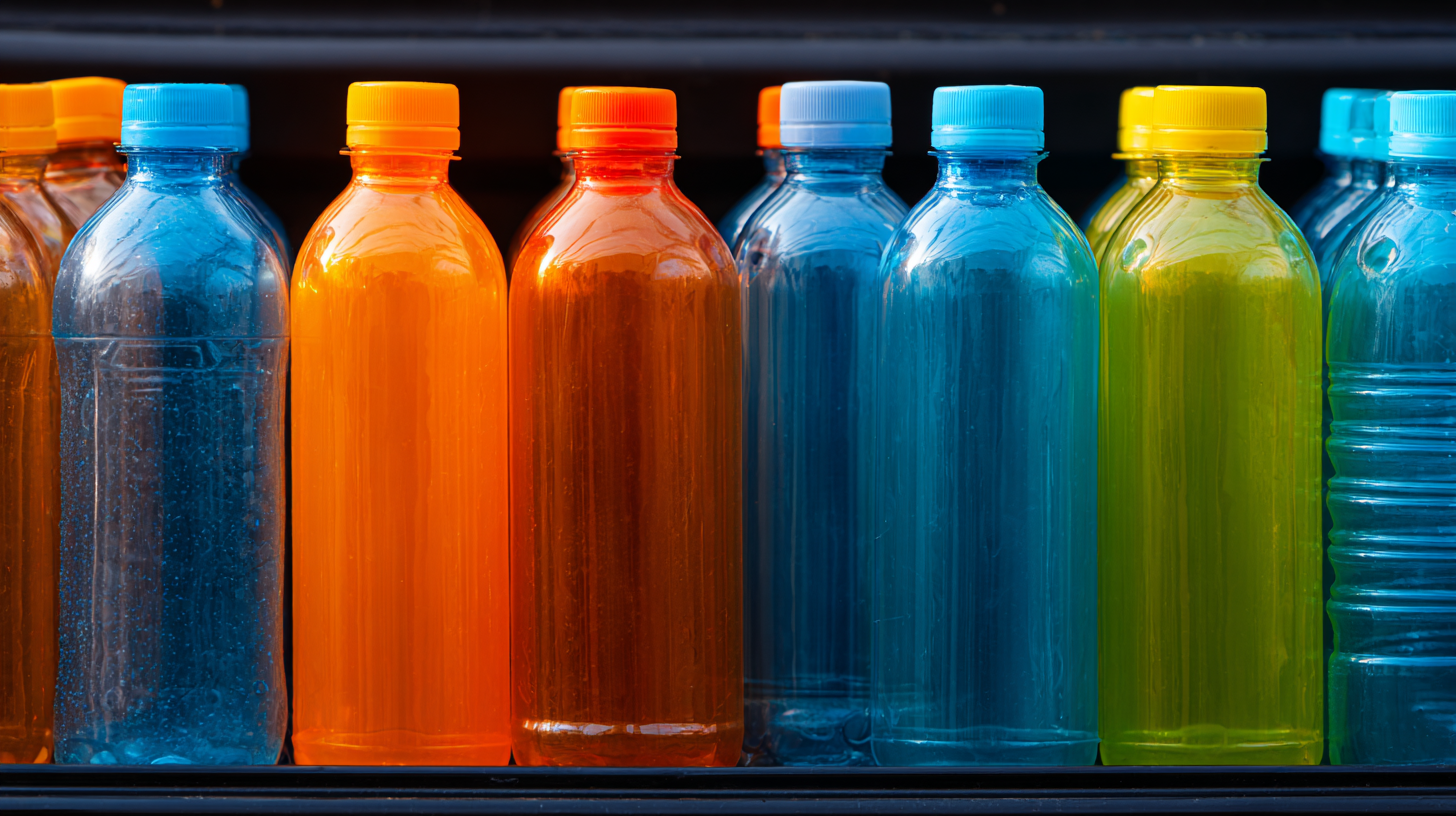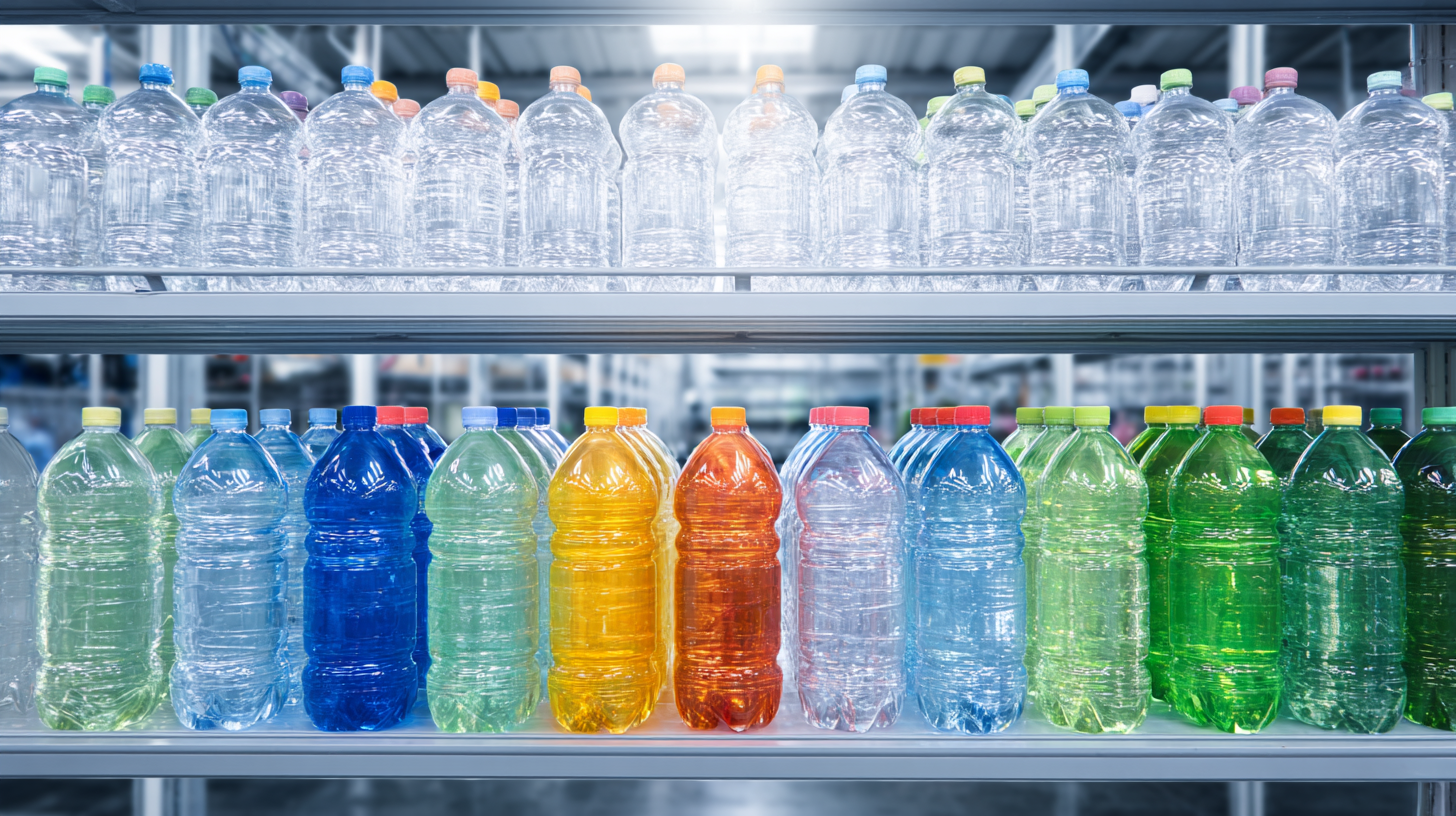
Unlocking Quality: Essential Supplier Sourcing Tactics for Best Plastic Bottle Containers
In an era where sustainability and consumer preferences are intertwined, the demand for high-quality Plastic Bottle Containers has surged dramatically. According to a recent report by Market Research Future, the global plastic bottles market is expected to reach approximately $300 billion by 2025, driven by innovation and the rising utilization of eco-friendly materials. As brands scramble to meet consumer expectations while navigating the complexities of the supply chain, effective supplier sourcing tactics have become crucial to ensure the delivery of superior products. This blog aims to unveil essential strategies that businesses can employ to unlock quality, emphasizing the balance between cost efficiency and premium output in sourcing Plastic Bottle Containers. By leveraging data insights and best practices, companies can not only enhance their product offerings but also bolster their market presence in this competitive landscape.

Understanding After-Sales Service Advantages in the Plastic Bottle Industry
In the plastic bottle industry, after-sales service plays a pivotal role in establishing long-term supplier relationships and ensuring customer satisfaction. Effective after-sales support not only enhances the overall experience for clients but also provides valuable assistance in addressing any post-purchase issues. Offering personalized service, including guidance on product usage and maintenance, can significantly bolster a supplier's reputation, making them a preferred choice for businesses seeking reliability.

Furthermore, robust after-sales service can lead to substantial cost savings for companies. By ensuring that clients have access to timely support, suppliers can minimize downtime resulting from product failures or defects. This proactive approach not only fosters loyalty but also encourages repeat business, as satisfied customers are more likely to return for future purchases. In a competitive market, differentiating oneself through exceptional after-sales service can ultimately be the key to unlocking consistent quality and growth within the plastic bottle sector.
Analyzing Repair Costs and Their Impact on Total Lifecycle Expenses
When considering the total lifecycle expenses of plastic bottle containers, repair costs can significantly impact the bottom line. According to a recent industry report by Smithers Pira, the global plastic bottle market is projected to reach $200 billion by 2025, with a growing emphasis on cost-effective sourcing and production practices. However, a neglected aspect of sourcing these products often lies in the maintenance and repair costs associated with container management. Organizations can face repair costs that account for approximately 15-20% of their operational expenses if they are not sourced carefully.

Investing in high-quality suppliers and durable materials not only reduces the frequency of repairs but also extends the functional lifespan of plastic containers. A study by the Flexible Packaging Association highlights that switching to higher-quality resin formulations can reduce repair and replacement costs by upwards of 30%. As sustainability becomes a priority, choosing suppliers who prioritize material quality can lead to significant long-term savings, underscoring the importance of strategic supplier sourcing in minimizing total lifecycle expenses.
Data-Driven Tips for Effective Supplier Selection in Plastic Bottle Sourcing
When it comes to sourcing plastic bottle containers, utilizing data-driven strategies can significantly enhance supplier selection. By analyzing historical data on supplier performance, price stability, and product quality, companies can make informed decisions that align with their specific needs. A thorough review of past projects and supplier feedback can reveal hidden patterns which can guide future selections.
One essential tip is to leverage supplier scorecards. Creating a scoring system based on criteria such as delivery times, quality assurance, and compliance with regulations allows for easy comparison between potential suppliers. This method not only streamlines the evaluation process but also ensures a well-rounded assessment, providing insight into each supplier's reliability.
Another valuable tactic is to utilize market intelligence tools. These tools can provide comprehensive insights regarding market trends, pricing fluctuations, and competitor analyses. By staying aware of industry developments, companies can identify emerging suppliers offering innovative solutions, ensuring that they remain competitive in a rapidly evolving market for plastic bottle containers.
Leveraging Industry Trends to Enhance Your Plastic Packaging Strategy
As the demand for eco-friendly packaging solutions continues to rise, leveraging industry trends becomes crucial for enhancing plastic packaging strategies, particularly in the plastic bottle and container market. With projected market growth from $31.72 billion by 2025 to $45.59 billion by 2033, companies must focus on sustainable sourcing tactics that align with consumer preferences. The shift towards bioplastics presents an exciting opportunity, as the bioplastic packaging market is expected to grow steadily, indicating a broader industry trend towards sustainability.
Adopting these industry trends requires a proactive approach to supplier sourcing. Businesses should prioritize suppliers that emphasize the use of biodegradable materials, ensuring that their products not only meet quality standards but also contribute positively to environmental sustainability. This tactic not only meets the growing consumer demand for environmentally friendly products but also positions companies strategically in a competitive market. Staying ahead of these trends not only enhances plastic packaging strategies but also builds consumer loyalty and brand reputation in an ever-evolving marketplace.
The Role of Digital Solutions in Streamlining Supplier Management Processes
In today's fast-paced market, streamlining supplier management processes is crucial for businesses producing plastic bottle containers. Digital solutions play a pivotal role in enhancing efficiency and ensuring quality during supplier sourcing. By leveraging advanced technologies, companies can automate routine tasks, maintain comprehensive supplier databases, and access real-time data, leading to informed decision-making and quicker responses to market demands.
Tips for successful supplier sourcing include conducting thorough research to find credible suppliers and utilizing digital platforms for initial vetting. Implementing AI-driven analytics can provide insights into supplier performance and risk factors, allowing businesses to make data-backed choices. Additionally, adopting cloud-based management tools facilitates seamless communication and collaboration with suppliers, ensuring that all parties are aligned.
Integrating digital solutions does not only improve operational efficiency but also enhances transparency across the supply chain. This enables businesses to monitor compliance standards effortlessly and build stronger relationships with reliable suppliers. By prioritizing these digital strategies, companies can ensure consistent quality in their plastic bottle containers while adapting to the ever-evolving marketplace.
Unlocking Quality: Essential Supplier Sourcing Tactics for Best Plastic Bottle Containers - The Role of Digital Solutions in Streamlining Supplier Management Processes
| Supplier Type | Material Quality Rating | Lead Time (Days) | Cost per Unit ($) | Sustainability Rating | Digital Management Capability |
|---|---|---|---|---|---|
| Local Manufacturer | A | 15 | 0.20 | Good | Yes |
| International Supplier | B | 30 | 0.15 | Fair | Yes |
| Regional Supplier | A+ | 20 | 0.25 | Excellent | No |
| Online Marketplace | B+ | 10 | 0.18 | Good | Yes |
| Bulk Supplier | B | 40 | 0.12 | Average | No |






